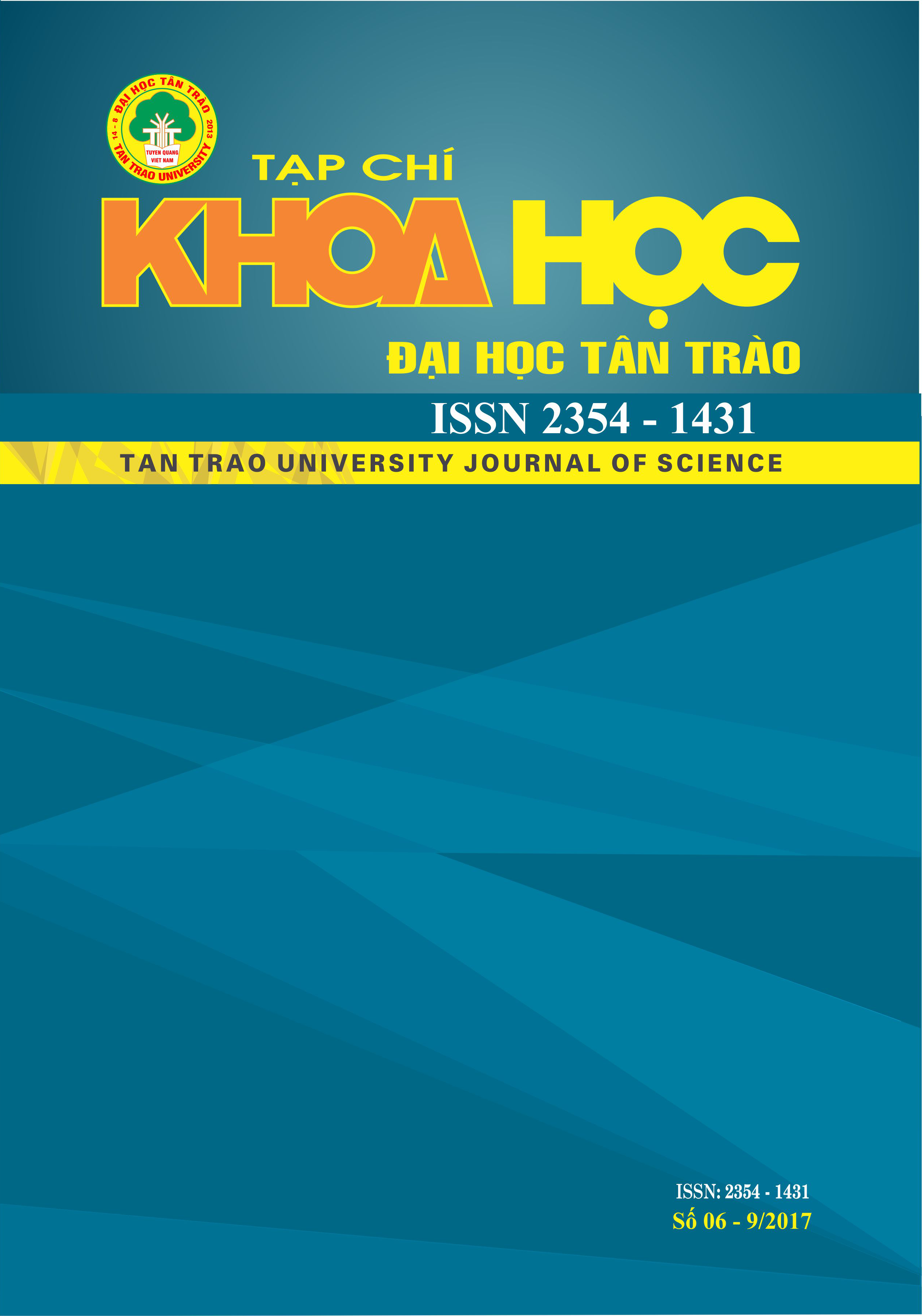Bức tranh ngôn ngữ về thế giới - đặc trưng văn hoá - tư duy cộng đồng ngôn ngữ
DOI:
https://doi.org/10.51453/2354-1431/2017/178Từ khóa:
Linguistic worldview; Culture – thinking; World’s division; Vocabulary.Tóm tắt
The linguistic worldview is formed in the daily perception of a language community. It is the overall image of the world which is reflected in language, it is the mode of accessing and the worldwide structure, it is the practical conceptualization. In the relations with cultural characteristics – community thinking, it can be considered from many sides, especially the world's division of a community through vocabulary of language. Statistics, comparisons, comparisons of identifying words have reflected the world’s division of a community.
Dividing the world into meaning pieces of words has created the diversity of thinking and community culture. On the one hand, it has had a great influence on the formation of language; on the other hand it has brought the richness of thinking and culture which also makes the distinctions in the lexical meaning of words.
Tải xuống
Tài liệu tham khảo
1. Hoàng Trọng Canh (2011), Một kiểu định danh và biểu trưng đối với tên gọi nghề “cá” trong phương ngữ Nghệ Tĩnh, Website của Trường Đại học Vinh;
2. Trần Ngọc Thêm (1998), Tìm về bản sắc văn hóa Việt Nam, Nxb TP. Hồ Chí Minh.;
3. Nguyễn Đức Tồn (2010), Đặc trưng văn hóa - dân tộc của ngôn ngữ và tư duy, Nxb Từ điển Bách khoa.
Tải xuống
Đã Xuất bản
Cách trích dẫn
Số
Chuyên mục
Giấy phép

Tác phẩm này được cấp phép theo Giấy phép Quốc tế Creative Commons Attribution-ShareAlike 4.0 .
Bài báo được xuất bản ở Tạp chí Khoa học Đại học Tân Trào được cấp phép theo giấy phép Ghi công - Chia sẻ tương tự 4.0 Quốc tế (CC BY-SA). Theo đó, các tác giả khác có thể sao chép, chuyển đổi hay phân phối lại các bài báo này với mục đích hợp pháp trên mọi phương tiện, với điều kiện họ trích dẫn tác giả, Tạp chí Khoa học Đại học Tân Trào và đường link đến bản quyền; nêu rõ các thay đổi đã thực hiện và các nghiên cứu đăng lại được tiến hành theo cùng một bản quyền.
Bản quyền bài báo thuộc về các tác giả, không hạn chế số lượng. Tạp chí Khoa học Tân Trào được cấp giấy phép không độc quyền để xuất bản bài báo với tư cách nhà xuất bản nguồn, kèm theo quyền thương mại để in các bài báo cung cấp cho các thư viện và cá nhân.
Mặc dù các điều khoản của giấy phép CC BY-SA không dành cho các tác giả (với tư cách là người giữ bản quyền của bài báo, họ không bị hạn chế về quyền hạn), khi gửi bài tới Tạp chí Khoa học Đại học Tân Trào, tác giả cần đáp ứng quyền của độc giả, và cần cấp quyền cho bên thứ 3 sử dụng bài báo của họ trong phạm vi của giấy phép.






